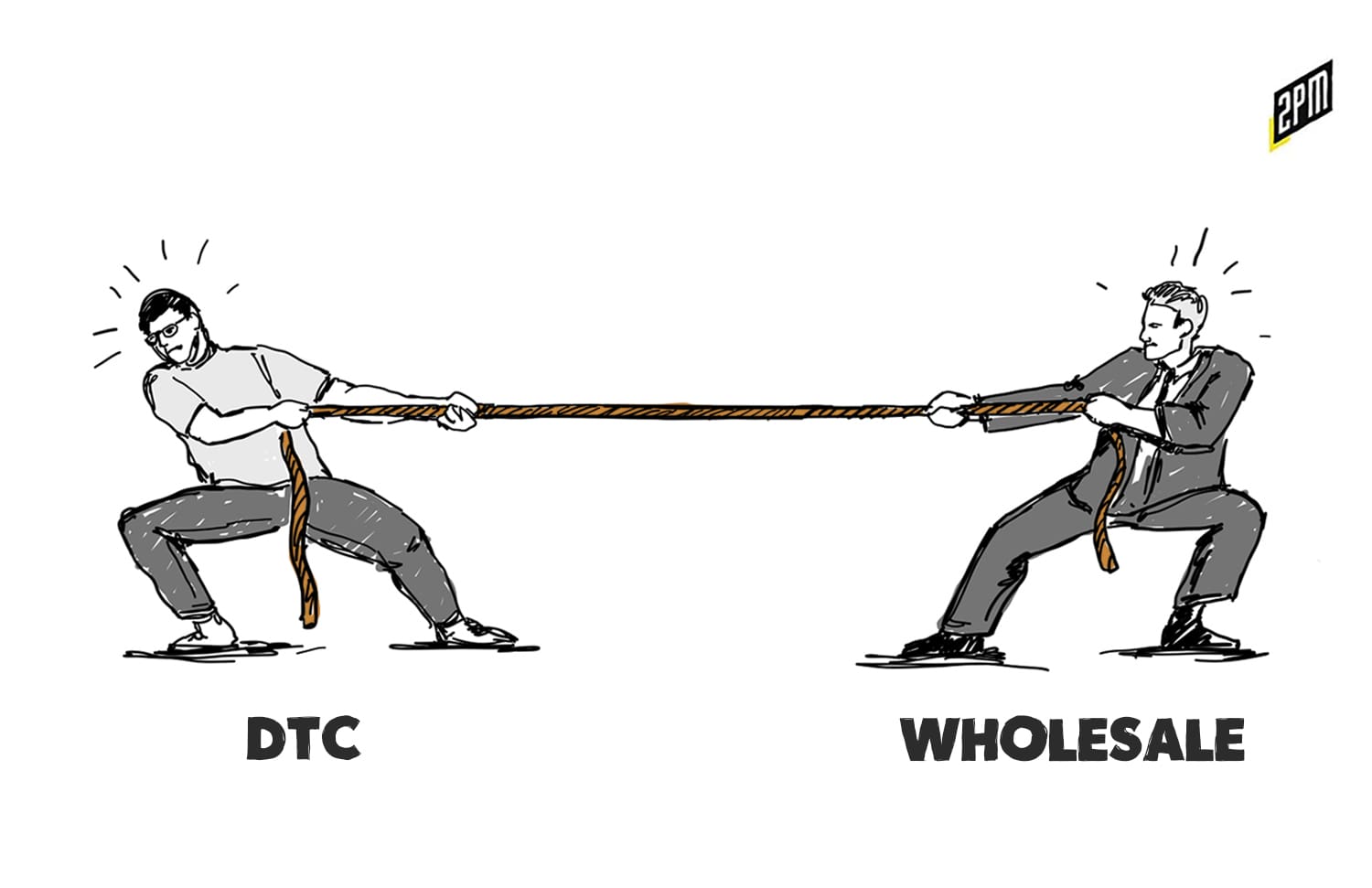
The two sides are seeking omnichannel nirvana.
As Nike focuses on its direct-to-consumer strategy, hurting department and specialty stores in the process, Allbirds is cozying up to wholesale. It’s an interesting paradox in omnichannel strategy that takes brand awareness and unit economics into consideration. The brands with sales velocity and stature to own their distribution can and will move towards an owned-store / DTC model. Brands working to reach profitability and scale are moving towards third-party retail wholesale partnerships.
A cycle seems to be forming: digitally-native and traditional brands that reach critical mass by working with wholesalers may eventually resign to a digital-first strategy.
This is just another sign of the vulnerable state of the DTC playbook and follows this macro-trends shaping retail right now. In just one week since publishing, two key commerce trends and their ripple effects outlined by 2PM on Tuesday began playing out in real time. From the Digital Commerce Global Summit presentation:
Physical-to-digital: Retailers are pulling back from third-party retailers
A leading strategy for brands of all sizes and status is to intentionally and carefully create a wholesale network that allows for inventory control and partnership over the spray-and-pray approach of retail generations past. Third-party retailers will play a smaller and different role than before as brands focus on their owned channels. Case in point: Nike will be 70% direct by 2027.
Digital-to-physical: DNVBs are opening owned shopping experiences
For online brands, expansion is happening at the store level. Physical stores heighten the brand’s online halo and if done well, are money makers. The risk is avoiding over-retailing. In step with this expansion, the mall will be remade in DTC’s image.
Allbirds’ earnings this week underscored its need to rethink its physical store and wholesale strategies. According to CNBC, shares fell after the brand posted mounting costs that ate into profits. Retail store openings were a top expense. To recoup sales, Allbirds said it would be selling through third-party retailers, naming Nordstrom as its wholesale partner. A recent WWD article explained:
The company will start wholesaling primarily in the U.S. as well as a small number of European retailers, with Asian stores in the plans for the future, Zwillinger said. He said the stores will not be given access to the full Allbirds assortment but select products most appropriate for their market segments. They will be limited in what they can sell on promotion to maintain Allbirds’ pricing integrity that it has maintained for the past five years, Zwillinger said.
To return to its DTC roots, Allbirds will need to grow its business and build stronger brand equity while maintaining the unit economics (pricing integrity) that CEO Joey Zwillinger cited in his comments to WWD. Nike has had a decades long advantage and it is an unfair comparison but this reversal is how it’s currently rebuilding its distribution model. According to NPD Group, Nike, along with Adidas and Skechers, is its own best retail channel.

Nike’s direct retail strategy is vast and nuanced, factoring in store concepts, gaming, apps and Web 3.0. Its plans to own the customer at every interaction is hurting retailers that have come to rely on it. Footwear News cited an urgency to consolidate distribution at Nike headquarters:
For Nike, an aggressive DTC strategy has led the brand to terminated wholesale accounts with retailers like Zappos, Dillard’s, DSW, Urban Outfitters, Shoe Show and more, leaving many retailers without the ability to sell one of the most popular brands in stores. Nike has also cut back on the amount of product it is offering in existing vendors, like Foot Locker, in order to consolidate distribution.
Foot Locker shares fell as it reported a grim outlook on the heels of losing some of Nike’s presence in stores. And other retailers like DSW and Urban Outfitters and Shoe Show have faced similar market pressures after news of Nike’s departure. While the brands are along their own cycle, the stores that rely on them are experiencing their own renaissance. It won’t be doom nor gloom for most.
If my assumptions are correct, the omnichannel void left by the largest, most established retailers will be filled by the up and coming class of modern brands like Allbirds and NOBULL. And then five, 10, or 20 years from now, the same stories may be written about these modern brands looking to build their futures – this is the new shape of the symbiotic relationship between brands, physical retailers, and evolving distribution strategies.
On one end: profitable, enterprise traditional brands are in the news for moving away from wholesale and towards DTC. And on the other end: yet-to-be profitable digitally-native brands are in the news for moving towards department store wholesale in search of profits and scale.
They’re each trying to achieve a sort of omnichannel nirvana.
By Web Smith | Editor by Hilary Milnes with art by Christina Williams
